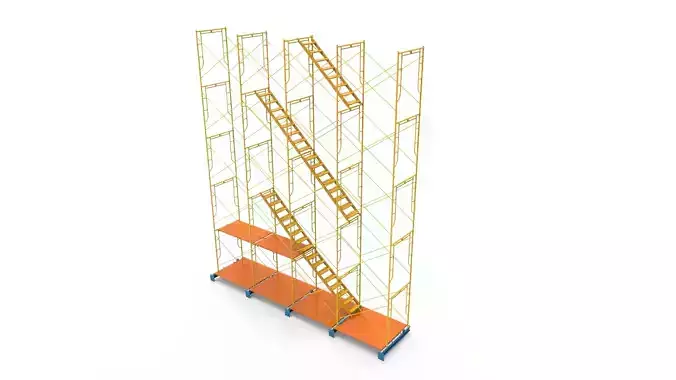1/6
Scaffolding is a temporary structure commonly used in construction and renovation projects to provide a safe and stable working platform for workers. It consists of a framework of metal poles, tubes, and boards that are interconnected to create a sturdy support system. Scaffolding plays a crucial role in enabling workers to access high areas, such as building exteriors or ceilings, where ladders alone would not be sufficient.
One of the primary purposes of scaffolding is to ensure the safety of workers. By providing a stable platform at different heights, it reduces the risk of falls and accidents. Scaffolding is designed to distribute the weight evenly, allowing workers to move freely and work efficiently. It also provides space for tools and materials, eliminating the need for workers to constantly climb up and down ladders.
Scaffolding systems are versatile and can be customized to fit the specific requirements of a project. Different types of scaffolding are used depending on the nature of the work, the height required, and the environment. Some common types of scaffolding include suspended scaffolding, supported scaffolding, rolling scaffolding, and mobile scaffolding.
Suspended scaffolding is often used for projects involving the exterior of tall buildings. It consists of platforms suspended by ropes or chains from the roof or a higher level. This type of scaffolding allows workers to move vertically and horizontally along the building façade.
Supported scaffolding, on the other hand, is the most commonly used type. It is constructed from the ground up and relies on vertical poles for support. The platforms are built on brackets attached to the poles, and additional horizontal and diagonal braces are used to enhance stability.
Rolling scaffolding, also known as tower scaffolding, is designed to be mobile. It has wheels at the base, allowing workers to easily move the scaffold from one location to another. This type of scaffolding is particularly useful for projects that require frequent repositioning.
Mobile scaffolding is similar to rolling scaffolding but is generally smaller and more compact. It is often used for light-duty work and is easy to assemble and disassemble. Mobile scaffolding is commonly employed in areas where space is limited, such as indoor construction projects or maintenance work.
In addition to its primary function as a working platform, scaffolding also allows for improved project management and efficiency. It provides easy access to different parts of a structure, allowing workers to carry out tasks simultaneously. It also facilitates the transportation of heavy materials and equipment, reducing the time and effort required to complete a project.
Safety is of utmost importance when working with scaffolding. It is crucial to ensure that scaffolding is installed by trained professionals and regularly inspected for any defects or damage. Workers should be provided with appropriate safety equipment, such as harnesses and helmets, and trained in proper scaffolding procedures.
In conclusion, scaffolding is a fundamental component of the construction industry, providing a safe and stable platform for workers to carry out their tasks at height. Its versatility, adaptability, and focus on safety make it an indispensable tool for construction and renovation projects of all sizes.
REVIEWS & COMMENTS
accuracy, and usability.






